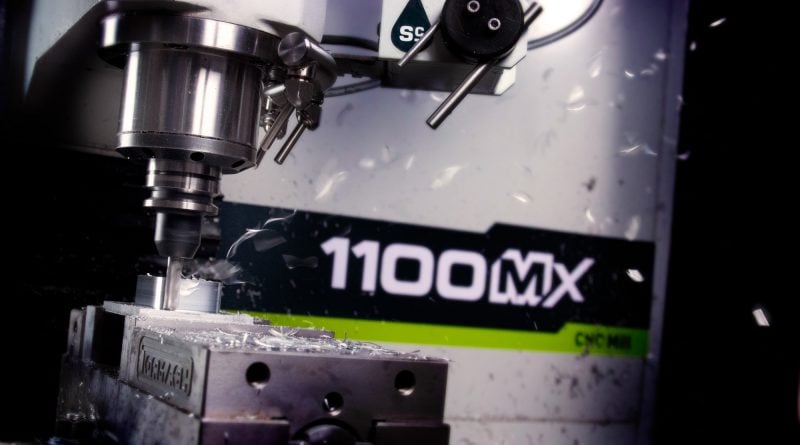Every machinist has their refined arsenal of tools that they like to use. No matter what the job looks like, they will try to find a way to pick their favorite tools and make them fit into the program.
But sometimes logic has to intervene. When you’re looking for a fantastic surface finish in aluminum, the Tormach SuperFly cutter is awesome, but if you also need to make some serious pockets, a Mini-Shear will make chips fly and give you that sparkling finish.
It’s all about picking the right tool for the right job. Every job is different, but that doesn’t mean that there aren’t a few stand-by tools that will make life simpler by just having them on-hand when you’re cutting aluminum.
Here are our go-to tools for cutting aluminum on a Tormach mill.
Shear Hog (or Mini-Shear)
As I mentioned before, the Shear Hog and Mini-Shear can really give you a beautiful finish, but they also really pack a punch.
That means you can really throw some chips, make pockets fast, and get a nice floor on your final part. Check out this video where we walk through some tests with the Mini-Shear.
Assorted Drills
If you’re a veteran with machine tools, this might seem like a no-brainer, but a set of assorted drills makes so many things simpler.
Now, an end mill is not a drill. Let me repeat that, an end mill is not a drill. They are different tools designed to do different operations. Sure, you can make a hole with an end mill, but an end mill is not a drill.
Drills are an efficient way to make holes. Simple as that. Not to mention, if you need to make any number of holes or an array, conversationally makes this process only a few quick clicks with PathPilot.
They’re a simple tool, but absolutely vital to keeping things simple in your aluminum machining exploits.
¼” Chamfer
Speaking of making holes… a chamfer is an ideal addition to any aluminum machining setup.
First, they can be used for spot drilling, helping to prevent your drill from wandering as you begin drilling a hole. The spot provides a solid location for your hole to begin.
What’s more, a chamfer can also be used to finish your part by chamfering the sharp edges of your part. ¼” is a pretty universal size, but if you have the space, having a whole array of these will help take your parts to a new level. This additional step is sure to draw attention from anybody looking at your parts, but especially those handling your parts. Chamfered edges give your parts a smooth, finished look AND feel.

⅜”, ¼”, and ⅛” End Mills
End mills are one of the most common cutters for machine tools. They come in a variety of sizes, shapes, flute counts, and materials (as well as coatings), which make them incredibly versatile.
When we’re talking about aluminum, having ⅜”, ¼”, and ⅛” end mills will get you a solid foothold. Larger cutters allow you to get rid of more material faster and the smaller cutters give you the ability to add more detail, especially on ID work. Tormach technical support specialist Adam Brunner explains, “Think about it this way, a small tool can make a large internal radius but a large tool can never make a small internal radius.”
A couple other important things to consider when picking out end mills for aluminum is tool coating and flute count.
Aluminum has a tendency to be gummy, which means that getting those chips away from the part and cutter is important to stay efficient and keep a nice surface finish. Keeping some YG-1, 3-flute end mills with TICN coating on hand will make your aluminum cutting a breeze.
Three flutes gives you the ability to maintain a flute in the cut (efficient), meaning you can run the tool faster while still being able to clear out those chips.
While there is an array of tooling available out there, and every job is different - requiring different tools - these are just a few of the essential tools that anybody cutting aluminum should have in their tool box. Our machinists use these cutters every day in the shop, and making sure you have the right tooling at your fingertips makes shop life so much better.


